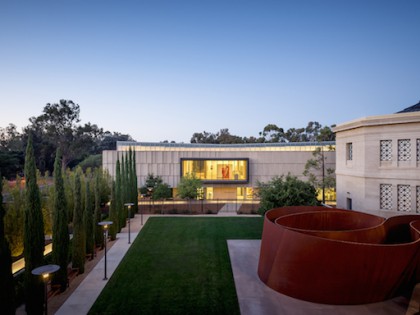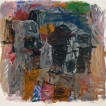In the four years since Lawrence Neil arrived at Stanford University as a freshman from Shaker Heights, Ohio, he has seen a concert hall open on campus, the amphitheater brought back to life as a rock venue and his freshman dorm turn into an arts-themed house.
He’s also seen the launch of the Stanford Arts Review, which he now edits, and the Senior Arts Gala, which he is producing. All of which makes Neil park his skateboard at a picnic table in front of the Old Union and lament what he will miss after he takes his degree in history in June.
“In terms of the arts,” he says, “I wish I had three more years here.”
Neil is leaving just as an enormous push called the Stanford Arts Initiative is taking hold, with new faculty hires, new courses and new construction, all to advance the arts. The university has long been known as the Silicon Valley trade school, cranking out scientists, preferably those in the science of computers. Stanford graduates have famously started Hewlett-Packard, Yahoo and Google. The list goes on and the legend runs deep, and even the students are surprised by this new emphasis to develop the other side of the brain.
“I’ve seen the arts develop into something that I never anticipated I would be experiencing at a school like Stanford,” says Neil. New breadth requirements will get freshmen out of labs and into studios, and an Honors in the Arts offering has given seniors one last chance.
“The university, from the president all the way down to the faculty and the students, is committed to delivering a broad education, and they believe that the arts are an essential component,” says Stephen Hinton, a professor of music history and the faculty director of the Arts Institute. “Student interest is enormous.”
Coming soon
If Neil weren’t graduating this year, he’d be around for the fall opening of the Anderson Collection, a stand-alone museum for postwar American art, and the fall 2015 opening of the McMurtry Building for Art and Art History, both flanking the Cantor Arts Center.
Add in the Bing Concert Hall, which opened in 2013 a few hundred yards from the museum, and you have the Stanford Arts District, a $227 million investment, all made within the same 10 years that funding for the arts was being slashed everywhere else.
“This was at the beginning of the recession, and at many places the story was that the humanities were going to be under tremendous pressure. It all looked pretty grim,” says Nancy Troy, who was lured from USC four years ago to chair the joint department of art and art history at Stanford. “This was at a time when it wasn’t clear what was going to survive at the major universities in the country, and Stanford was putting resources into the arts and especially into what I do.”
Once the Arts District is complete, there will be six facilities forming a logical symmetry: three for the visual arts – Cantor, Anderson and McMurtry – on the north side of Palm Drive; and three for the performing arts – Bing, Frost Amphitheater and Memorial Auditorium – on the south side, with the smaller Stanford Art Gallery an outlier.
As a one-stop arts destination, the district will offer more variety than San Jose and maybe even San Francisco. And you can’t beat the price: free admission to the museums and free parking on weekends and after 4 p.m. weekdays.
‘A great moment’
Once finished, the Arts District “will bring the artists and the art historians and the people visiting the museum all together,” says SFMOMA director Neal Benezra. “It’s really a great moment there.”
The moment can be traced back nearly 20 years to former President Gerhard Casper.







